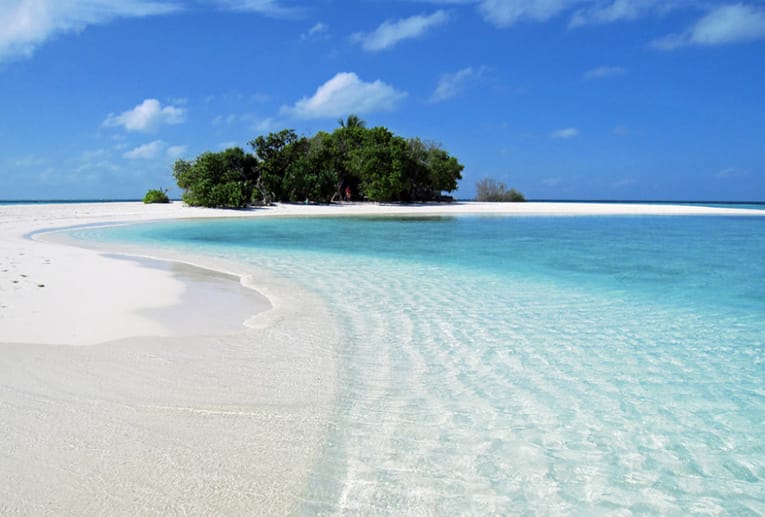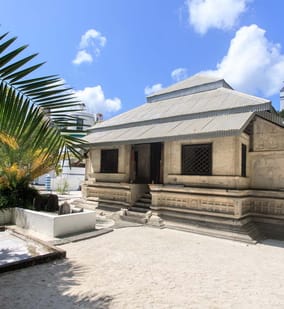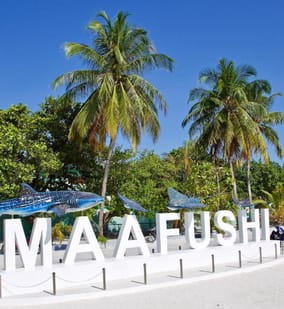How Maldives Tourism Discovered and Who Visited First

When George Corbin first arrived in the Maldives in a cargo ship in 1971 he knew he couldn't wait to pad barefoot along the beaches of the coral-fringed archipelago once again. Corbin knew he had discovered the perfect holiday destination -1,190 islands, shining like jewels in the middle of the Indian Ocean.
He returned the following year with the 22 guests, mainly journalists and photographers, to share his experience of the country. And so on 16 February 1972, the first group of tourists arrived in the Maldives. The intrepid travellers flew on an Air Ceylon charter flight from Colombo and landed on a small airstrip in Hulhule Island (now Velana International Airport) before they were ferried across to the mainland on a Dhoni (traditional boat).
The group found a nation untouched - inhabited by less than 100,000 citizens without telephones, cars or policemen. Their accommodation was arranged in three private houses in the capital Male’, with several young Maldivians – later to become some of the country’s biggest tourism entrepreneurs – cooking and cleaning for them.
In those days, Maldivian houses were made from coral rather than concrete and were topped by thatched roofs skilfully woven together. Each had its own verdant garden filled with multi-coloured flowers and trees hanging with exotic fruits such as mangoes, papaya and breadfruit.
The country then had a single disco in Male’ city, known as ‘’Ice House’’, which the early tourists attended, mingling happily with the locals.
The local hosts, young Maldivians accompanied the group to a different nearby islands everyday, some uninhabited but all unspoilt by the excesses of modern life. It was a big challenge for young Maldivians to cater tourists at first time. They didn't know how to cook for them or how to deal with them. The lunch on the first day brought to a fore the wide gap in the culinary tastes of the two countries.
The menu, consisting of Biryani, curry, rice and a host of other local dishes, proved too spicy for the Europeans' sensitive palates. And so the Italians decided to cook for themselves. They went spear fishing, a favourite activity among them, and caught an array of exotic fish including sharks, eels, snappers, barracudas and groupers all of which soon made its way onto the barbecue and onto their dinner plates. Indeed, the first tourist brochure printed by Corbin boasted of the joys of spear fishing in the Maldives.
The Italians spent their trip snorkelling in clear, turquoise lagoons and photographing the thriving underwater life, the rainbow-coloured fish swimming contentedly in and out of the coral. They lounged on glorious white sandy beaches by day and went for moonlit walks under the starry sky at night.
After returning to Italy following their 12-day trip, the group penned articles and published photos narrating their tales of the virgin beaches with their swaying coconut palms. Their visit opened the door to Maldives tourism and Corbin swiftly set up a travel agency, and continued to send Italian tourists to the Maldives on a regular basis. The country’s first two resorts, Kurumba and Bandos, built using local materials of corals, coconut wood and palm thatch was opened in 1972. It was the start of the multi-billion dollar tourist industry that sees over 1,400,000 visitors, 3 time more than the population of the country, flock to the Maldives annually to share in some of those very same experiences as those Italians who first stepped foot upon the country's pristine shores.
Previous visitors to the Maldives had included shipwrecked sailors, foreign armies, and passing – then, in the 1960s, brave American drivers, a handful of German travellers, and a few flower children taking a side road off the hippie trail. But a now-famous UN report had concluded in the 1960s that the remote island stake lacked all the facilities required to make tourism a success.
Yet though amenities were basic and communications virtually non-existent, the Italians, found the same sunshine, sea, pure white sand and extravagant coral reefs that, forty-seven years later, bring more than 1.4 million visitors to the Maldives every year.








